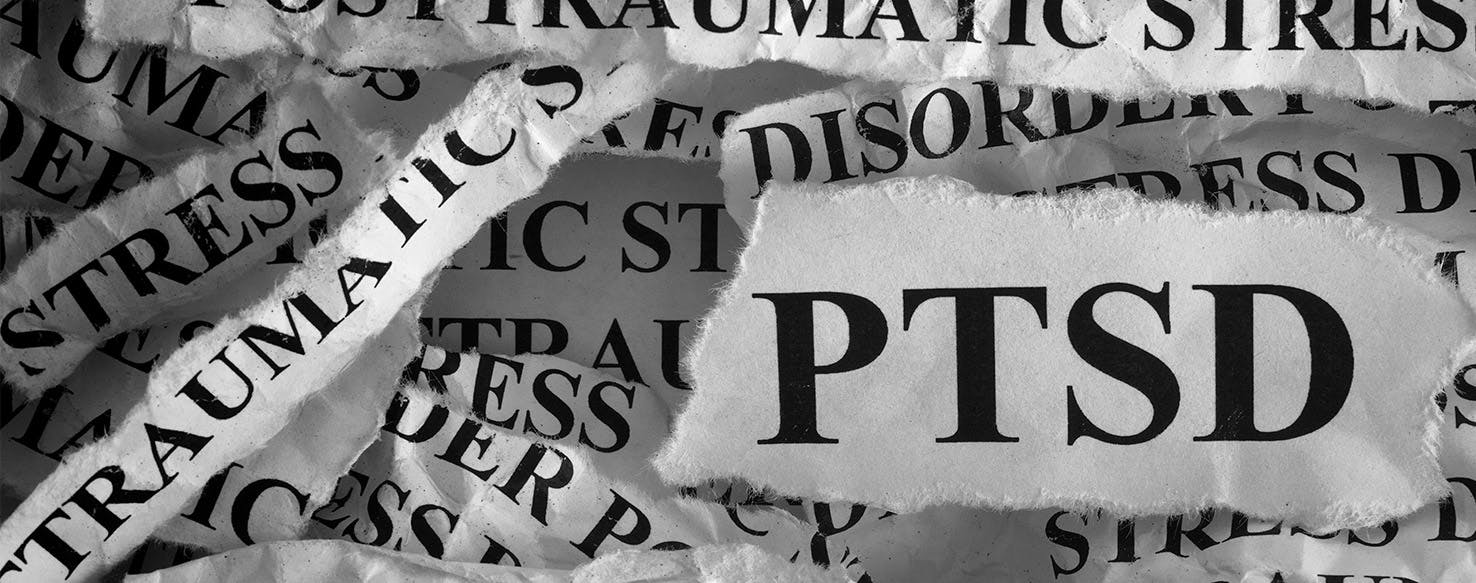In humans, PTSD, or post-traumatic stress disorder, is a newer term for a very old condition suffered by those who have been through traumatic events in their childhood or adult lives. While we most commonly associate PTSD with soldiers returning from combat, PTSD can affect people from a variety of backgrounds, whether they have been in the armed services or not. Any traumatic event can cause flashbacks in people, with symptoms ranging from nervousness, anxiety, sweats, paranoia or other serious physical manifestation.
While we know people can suffer from PTSD, what is less talked about is whether our doggy friends also experience and react to trauma.
Can Dogs Get PTSD?
As it turns out, your pooch can also be affected by past trauma. PTSD in canines can take multiple forms and can be officially diagnosed as Canine PTSD (or C-PTSD). It will manifest in the form of a change in behavior after an event or series of events. While dogs that return home from war zones and active combat alongside handlers are more easily determined as having Canine Post-Traumatic Stress Disorder, it is often more difficult to diagnose a pet adopted from a shelter at a mature age, or a pup you have had for a while that suddenly begins to exhibit unusual behavior.
In dogs, PTSD is a more instinctual process, given a dog’s lack of complicated emotional expression. Our canine buddies are driven by primal systems that promote the physical well-being of them and their companions. Dogs tend to act more instinctively toward triggering events. Dogs are also unable to communicate the exact trauma in their past that is causing their PTSD, which can make modifying the behavior or lessening the trigger’s negative stimulus more difficult.
Does My Dog Have PTSD?
Your furry buddy may experience a shift in behavior after one experience or a series of disturbing events. Situations such as major trauma or an accident, attack by another dog or human, sudden exposure to loud noises, and survival of an extreme weather event like a flood or hurricane can all cause PTSD. If a dog experiences pain, loss, or starvation in connection with a loud noise, threatening motion, or other stimuli, this can cause an instinctual reflex, manifesting in aggressive or fearful behaviors.
Your dog may shy or pull away from similar stimulus, sometimes in violent ways. Your dog may fight, attack, growl or bare their teeth to escape a stimulus. They could also become destructive or wet or defecate uncontrollably or hunker into a corner or small space. Some dogs may also try to crawl into their owner’s laps or arms to escape something that has caused them trauma in the past.
Other signs of C-PTSD can be:
- Clinginess
- Panting
- Excessive barking
- Withdrawal from people, even loved ones
- Depression and lack of interest in others
- Aggression when they were never aggressive before
- Hesitation to go places they previously went without issue
- Avoidance of activities they enjoyed in the past
If your dog’s history is unknown, it can be difficult to determine whether your companion is suffering from C-PTSD as a result of an event in their past, or general behavioral issues caused by lack of training. Working with a certified professional dog trainer can help determine if your dog has triggers that are caused by specific events.
How Do I Treat My Dog’s PTSD?
Regardless of an official diagnosis of PTSD in your dog, treatment for severe behavior issues triggered by specific events will involve a combination of training and medication. Training, or behavior modification, can be done at home but is best attempted after consultation with a certified professional trainer who practices positive reinforcement methods.
Desensitization is often employed as a method of relieving your dog of the stress and anxiety of post-traumatic stress disorder. As an example, a dog is exposed (at a distance) to stimulus that causes PTSD behavior to occur. When there is a tolerance of the noise or action, the dog is rewarded with a treat. Gradually, over an extended period of time, the exposure is increased with the aim of totally desensitizing the dog to it.
In some cases, medications may be needed to help calm your dog during training or if training is ineffective. Medications can be sedatives that help your dog sleep during periods of loud noises such as Fourth of July fireworks, moving, parties, or other stressful events. Homeopathic remedies are also available that disperse fragrances known to have calming properties.
Exercise and fun, rough play are thought to initiate changes in the brain that cause new neuronal growth. To put it simply, bad memories are replaced and new, good memories are formed as a result.
If you are concerned that your best buddy may have developed C-PTSD, take them to the veterinarian to rule out a health condition that you may not be aware of. You can then discuss with the veterinary team the possibility of post-traumatic stress disorder. Whether training, desensitization or medication are the methods of treatment, for dogs suffering from PTSD it will be important to provide consistent, regular help and unconditional love for the best chance at a positive outcome.


